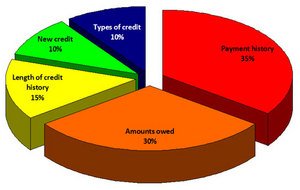Using the right business model is extremely important when starting a business or introducing a new product to the market. The right business model can bring rapid success, while the wrong one can make success impossible. Business models show interested parties how a business enterprise plans to generate revenue and the typical investor will evaluate the business model before making an investment. Although there are many business models today, historically there are only a few primary models. This article identifies four primary models from which many others have evolved, these are: Shop Keeper, Direct Sales, Bait and Hook; and, Industrialization of services.
Shop Keeper
The oldest and most basic business model is shop keeper. This model involves opening a store filling it with products and waiting for customers to come in. It is the simplest most straight forward business model. Good examples are the mom and pop grocery store and the neighborhood barber shop. While this model is still used today it is not as useful as it once was. One key to success and the most difficult aspect of this model is finding the right location.
Direct Sales
The direct sales business model involves selling and marketing directly to the customer away from a fixed location. Direct sales are where the business representative goes to the customer to sell products. Examples are door to door sales, in home parties and group presentation. The fuller brush man and door to door vacuum cleaner sales were big at one time, and then in home parties for products such as Tupperware, Mary key and Avon became popular. Now it is popular to sell various products directly through Multi-level marketing (MLM) plans.
Show Changes: On / Off Key: Additions Deletions
Title
What Are the Four Primary Business Models?
Introduction Image
Introduction
Using the wright business model is extremely important when starting a business or introducing a new product to the market. The wright business model can bring rapid success, while the wrong one can make success impossible. Business models show interested parties how a business enterprise plans to generate revenue and the typical investor will evaluate the business model before making an investment. Although there are many business models today, historically there are four basic ones. These are: Shop Keeper, Direct Sales, Bait and Hook; and, Industrialization of services.
.Section Title 1
Shop Keeper
Section Text 1
The oldest and most basic business model is shop keeper. This model involves opening a store filling it with products and waiting for customers to come in. It is the simplest most straight forward business model. Good examples are the mom and pop grocery store and the neighborhood barber shop. While this model is still used today it is not as useful as it once was. One key to success and the most difficult aspect of this model is finding the right location.
Section Image
.Section Title 2
Direct Sales
Section Text 2
The direct sales business model involves selling and marketing directly to the customer away from a fixed location. Direct sales are where the business representative goes to the customer to sell products. Examples are door to door sales, in home parties and group presentation. The fuller brush man and door to door vacuum cleaner sales were big at one time, and then in home parties for products such as Tupperware, Mary key and Avon became popular. Now it is popular to sell various products directly through Multi-level marketing (MLM) plans.
Section Image
.Section Title 3
Bait and Hook
The bait and Hook business model dates from the early 20th century. Typically this model involves offering a product for free or a very low price, but then selling component products at a high price to the customer once they are hooked. A good example is printers and ink cartridges the printer is inexpensive, but then you must buy ink cartridges at a high price to keep the printer working
Industrialization of Services
This model involves turning a service into and industry, for example, Law and accounting. Lawyers and accountants ban together and help each other out in the provision of services to clients. Through associations and cooperatives they are able to specialize or hire others that specialize in certain areas of practice. The trend has been toward very large firms with wide ranging capabilities, especially in accounting and business consulting. The accounting profession continues to consolidate to where there are fewer and fewer small shops. The same trend is occurring in law but to a lesser extent.



